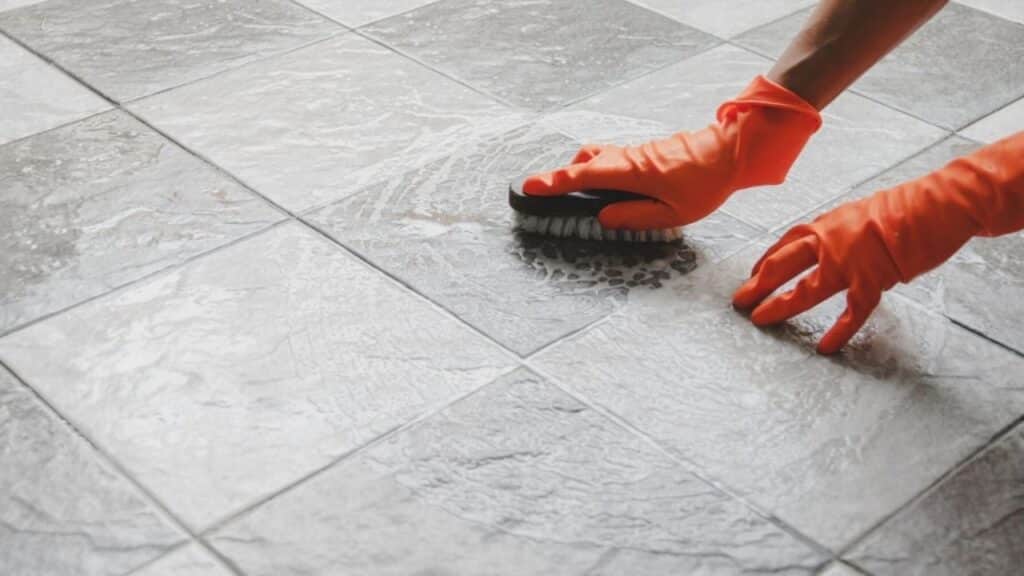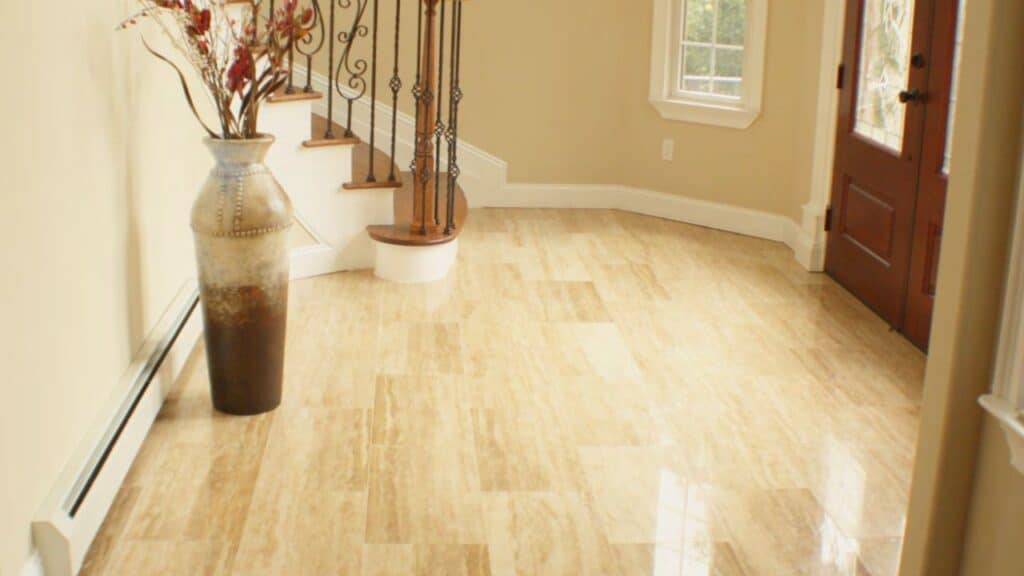Common travertine restoration mistakes include the use of acidic cleaners like vinegar or lemon juice, skipping the sealing process, over-polishing, and attempting DIY repairs without proper knowledge or tools. Avoid these damages by using only pH-neutral cleaners, applying appropriate sealants regularly, and consulting professionals for significant restoration tasks.
The idea of travertine restoration is usually simple. Still, for DIY enthusiasts and homeowners with limited knowledge about DIY cleaning products, it can cause severe damage while doing any natural stone restoration. Here are the common mistakes of restoring travertine or other natural stones and how you can avoid them.

Easy To Avoid Mistakes in Travertine Restoration
These are not just mistakes regarding travertine restoration, but they are common with most DIY Natural stone restoration processes.
1- Using Harsh or Acidic Cleaners
Travertine stain removal with harsh or acidic cleaners may result in:
- Etching
- dull spots
- surface damage.
Why Is It A Problem?
Products like vinegar, bleach, lemon juice, or generic store-bought degreasers have harsh chemicals and acids that react poorly with calcium-based natural stone.
What to Do Instead:
Use a pH-neutral stone cleaner and degreaser specifically designed for travertine. They can remove stains without damaging the surface.

2- Skipping the Honing Step
The honing process is a crucial step in the restoration process, right before travertine floor polishing.
Why It’s a Problem:
If you are noticing visible scratches, etches, or uneven patches on travertine, then polishing alone won’t fix them. It may highlight imperfections even more.
What to Do Instead:
Start with honing. It will smooth out the surface by removing a very thin top layer. It will prepare the stone surface for high-quality polishing.

3- Incorrect Sealer Application
One of the most common mistakes of travertine restoration is:
- Applying too much sealer
- Using the wrong type of sealer
- Skipping the sealer as a whole.
Why It’s a Problem:
Applying too much sealer may leave a sticky residue. Not sealing travertine may leave the natural stone vulnerable to stains, scratches, and wear. Using the wrong type (e.g., topical instead of penetrating) can affect the finish and breathability.
What to Do Instead:
Use a high-quality penetrating sealer suitable for travertine sealing. Apply it evenly and wipe away the excess. Re-seal as needed, usually every 1–2 years, in high-traffic areas.

4- Improper Filling of Holes and Cracks
Another common mistake of restoring travertine is using grout, cement, or generic fillers to patch up small holes or chips.
Why It’s a Problem:
Travertine is naturally porous and has small holes. Cheap fillers for grout and tile restoration won’t stick well and can pop out or discolor over time.
What to Do Instead:
Use travertine-specific filler or epoxy according to the color of the travertine surface.
Professionals typically fill holes during tile restoration to create a smoother, more uniform surface.

5- Not Testing Products First
Homeowners or first-time DIYers will not test the products like stone cleaner, sealer, or polish before applying them to the travertine surface. This is a common mistake in travertine stone floor refinishing.
Why It’s a Problem:
Different travertine tiles have different porosity and finishes. A product that works on one may damage another.
What to Do Instead:
It is recommended to test a new product on a small, hidden area before applying it everywhere. Wait 24 hours to ensure there’s no negative reaction.

6- Neglecting Post-Restoration Maintenance
You may believe that travertine restoration is a one-time job, and may not opt for regular maintenance.
Why It’s a Problem:
Your restored surface will quickly lose its shine and protection.
What to Do Instead:
Follow these travertine maintenance tips to keep it in good condition:
- Cleaning travertine with a pH-neutral cleaner using a soft mop.
- Wipe up spills immediately.
- Re-seal every 1–2 years.
- Avoid dragging furniture or abrasive mats across the surface.

Bottom Line
Travertine restoration mistakes can ruin your entire hard work. Mistakes like improper filling, incorrect sealer, to using harsh chemical cleaners can cause the damage than benefit. So, make sure to avoid these mistakes and, even as a DIYer, restore the shine and luster of such natural stone effectively. If the restoration consists of large-scale work, then consult professionals for the best results.
- 3shares
- Facebook0
- Pinterest0
- Twitter3
- Reddit0













